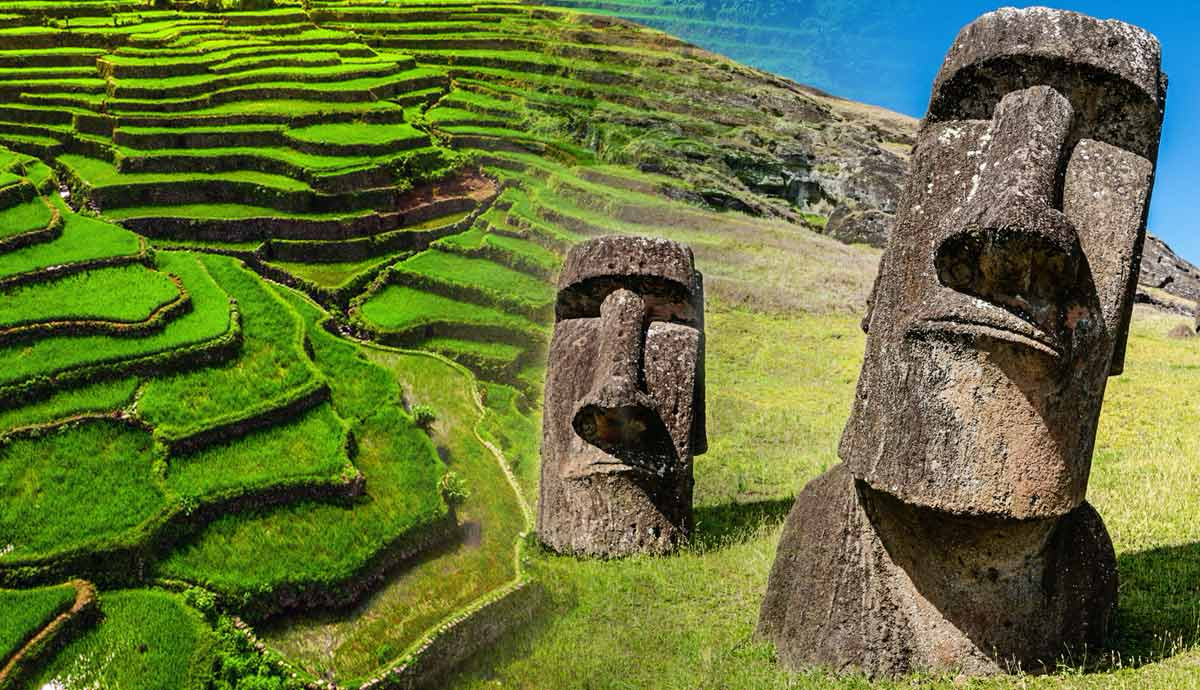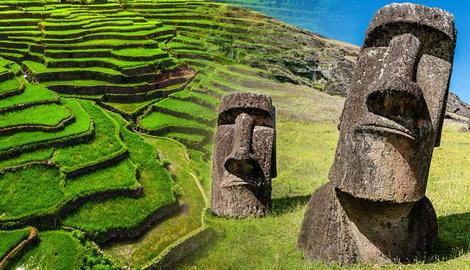
Ancient Greek engineer and master of mechanics Philo of Byzantium was the creator of the Seven Wonders of the Ancient World list. He came up with the list in 225 BCE. It wasn’t until 2007 that the New 7 Wonders Foundation updated this old list by conducting a global poll where millions of people around the world had the chance to vote. This is how the New 7 Wonders of the World came to be. However, even the updated list doesn’t do justice to the stunning and magnificent landmarks and monuments that exist in our world. You will find below a list of places worthy of being called Wonders of the World, thanks to their historical, cultural, and architectural significance on the world stage.
1. The Acropolis, Greece

The hallmark of ancient Greek civilization doesn’t need an introduction. This is, after all, the timeless symbol of cultural and architectural achievement. Every day, more than 23,000 people flock to this historical landmark in Athens. Sitting at 490 feet above sea level and with a surface area of about 7.5 acres, the Acropolis still has four standing structures. These are the Parthenon, the Erechtheion, the Temple of Athena Nike, and the Propylaia. The ancient citadel was built in the 5th century BCE. This was under the leadership of Pericles when Athenian power was at its peak.
It goes without saying that some of the most renowned sculptors and architects of ancient Greece are behind the design of the structures of the Acropolis. As for the Parthenon, it was dedicated to the goddess Athena. She was the patron deity of Athens. The Parthenon is the most famous of the structures of the Acropolis and is an iconic symbol of ancient Greek civilization.
2. Moai, Chile

The indigenous inhabitants of Easter Island in Chile created these iconic statues that deserve, without any doubt, to be considered among the New Wonders of the World. The Rapa Nui people made these wonders around 1,100 to 1,500 CE. We encourage you to take a trip to this region of Chile, which is located in the southeastern Pacific Ocean, because witnessing these statues is totally worth it.
Some of the Moai stone statues weigh many tons and are more than 30 feet or 9 meters long. Carved from volcanic rock, mainly from the Rano Raraku quarry, they were transported to different locations around Easter Island. The statues represent the faces of ancestors and important figures. On top of that, the Rapa Nui people believed that the Moai were symbols of political as well as religious power and authority.
The statues were placed on ahu. These were large stone platforms that served as ceremonial sites. Some of the Moai were adorned with pukao, large cylinders or hats placed on the heads of the statues. The pukao were made of volcanic red scoria.
3. Banaue Rice Terraces, Philippines

Despite not making it to the list of the New Seven Wonders of the World, many actually refer to the Banaue Rice Terraces as the “Eighth Wonder of the World.” Over 2,000 years ago, the Ifugao people, an indigenous group of Filipinos, carved the rice terraces into the mountains. At present, they are used to grow rice and vegetables.
These terraces are a standing testament to the advanced irrigation systems and agricultural techniques that the indigenous people developed. Located around 1,500 meters above sea level, they cover a wide area across the Ifugao province.
If you’re visiting, make sure to go to Banaue, Hapao, and Batad. This is where you will witness the most famous terraces.
The historical and cultural significance, as well as the breathtaking beauty of the Banaue Rice Terraces, are recognized all around the globe. And there’s no wonder that these iconic landmarks are listed as a UNESCO World Heritage Site since 1995.
4. Stonehenge, UK

This is one of the world’s most famous prehistoric monuments, so no doubt it should be considered a Wonder of the World. If you’re planning to visit, take a trip to Wiltshire, England. You can see the large standing stones on Salisbury Plain. Some of the structures are topped by horizontal lintel stones.
The construction of Stonehenge spanned several centuries, and the monuments were completed in multiple phases. The process started with the excavation of a circular ditch and bank around 3000 BCE. This is when the “Henge” was formed. Construction continued through 2000 BCE. The Stone Circle is the most famous part of the structure.
Two main types of stones were used to construct Stonehenge. These include the larger Sarsen stones that were sourced locally and the smaller bluestones that were transported from Wales, over 150 miles away.
While all the other monuments and historic landmarks on our list have a purpose behind building them, the exact objective and significance of Stonehenge remains a mystery. Some believe it’s been a site of ceremonial or religious significance. Others suggest it was used for burials. This is because cremated human remains have been found on the site.
5. The Terracotta Army, China

China’s Terracotta warriors were discovered in the 20th century. To be more precise, a group of local farmers found these clay figures in 1974 while they were digging a well in Shaanxi province, China. The area was suffering from a severe drought back then.
During the Qin Dynasty, skilled laborers and artisans crafted these warriors more than 2,000 years ago. What for? To accompany the tomb of Qin Shi Huang, China’s first emperor. He ruled from 259 to 210 BCE. Thousands of life-sized terracotta soldiers, along with their chariots and horses, were buried with Emperor Qin. It was believed that they would protect him in the afterlife.
Today, the Terracotta Army is a UNESCO World Heritage Site, and millions of visitors flock to Shaanxi every year to see this unique archaeological discovery. The clay figures are located at Emperor Qinshihuang’s Mausoleum Site Museum.
And it’s definitely worth visiting as you will have the chance to see how unique the figures are. You will learn about the artistic skills of the ancient Chinese after witnessing the detailed facial expressions, hairstyles, weapons, and armor of the warriors.
6. Angkor Wat, Cambodia

Millions of tourists flock to Cambodia every single year. And almost all of them go there to see this iconic temple complex in Angkor. In the 12th century, King Suryavarman built the Angkor Wat. It was originally constructed as a Hindu temple. The first temple to be dedicated to the god of Vishnu. However, it was later turned into a Buddhist temple.
The Angkor Wat covers around 400 acres, and thanks to its rich ancient history and architecture, the monument is classified as a UNESCO World Heritage Site. It’s also worth noting that the Cambodian temple complex is considered the largest religious monument in the world in terms of land size.
When visiting, and you should, you will witness the majesty of the construction details of this architectural marvel. The wall carvings mimic an ancient picture book. They will give you a glimpse of life in the Khmer region, historical happenings, and Hindu stories.
All the expansive galleries, towering spires, and stone carvings that you will see at the Angkor Wat are made from sandstone blocks. One thing to note is that the design of the temple symbolizes Mount Meru. This is the home of the gods in Hindu and Buddhist cosmology.
7. The Alhambra, Spain

Granada is lucky to have such an iconic palace and fortress complex that is famous for its history, beautiful architecture, and views. This site is totally worth a visit at least once during your lifetime. The Alhambra was built in the 13th and 14th centuries during the Nasrid Dynasty. Back then, the Muslim rulers used it as a royal palace, fortress, and court for the Nasrid Kingdom of Granada.
Visit to see the intricate Islamic architecture of this architectural landmark. You will see mosaic tiles, beautifully detailed stucco work, elaborate courtyards, and arabesque designs. The main sites you need to visit in the Alhambra include the Court of the Lions, the Palace of the Lions, and the Generalife Gardens.
It’s true that the historic site was originally a medieval Islamic palace. However, after the Reconquista in 1492, the Alhambra fell under Christian control. As a result, the new rulers modified and even added some sections to the place.
The Alhambra is a UNESCO World Heritage Site, and without any doubt, it deserves to be considered among the New Wonders of the World for its beauty, history, and architectural significance.
8. The Leaning Tower of Pisa, Italy

This structure was just meant to be a free-standing bell tower for Pisa’s cathedral. However, during construction, it began leaning because of its weak foundation on unstable soil. And the tilt kept increasing over the years. It wasn’t until the 20th and early 21st centuries that efforts were made to stabilize it. The lean was reduced from 5.5 degrees to around 4 degrees after extensive restoration. Today, the tower is structurally stable.
The 183-foot tall structure is part of the Piazza del Duomo, and while its construction began in 1173, it wasn’t completed until 1372. With eight stories, the Leaning Tower of Pisa weighs about 14,500 metric tons.
Of course, it’s worth seeing the large seven bells at the top of the tower after climbing it. However, you have to know that these bells have not rung for over a century now. So, while you can see them, you won’t have the chance to hear them. Obviously, engineers and restorers thought that if the bells were to continue ringing, this would have gotten the tower to lean even more.
9. Catacombs of Kom el Shoqafa, Egypt

This ancient necropolis in Egypt’s Alexandria is a site that will surely wow any history buff. And it definitely deserves a spot on the Seven Wonders of the World list thanks to its historical and artistic significance. Carved out of solid rock, this iconic archaeological site dates back to the Greco-Roman period in Egypt, the 2nd century CE.
In the very beginning, when they were constructed, these tombs served as the burial site for a wealthy family. However, they were expanded later on to include more tombs. The name “Kom el Shoqafa” means the “Mound of Shards.” It refers to the piles of broken pottery that were found around the site. These were left by ancient visitors who brought food and offerings, and discarded the containers afterward.
While the catacombs consist of three levels, the lowest one is actually underwater. When visiting, you can only explore the upper levels. You will get the chance to see several burial chambers, a spiral staircase leading down to the tombs, and a banquet hall. You’ll also witness Egyptian religious symbols blended with Greek and Roman artistic elements at the Main Tomb.
The most interesting thing is how these catacombs were rediscovered. This was by accident when a donkey fell through a hole in the ground in 1900, which led to the rediscovery of the underground chambers.
10. Eiffel Tower, France

There’s no reason that prevents this famous iconic landmark from being considered a Wonder of the World. It’s one of the modern world’s most important man-made structures and has a very remarkable historical as well as architectural significance.
The Eiffel Tower was completed in 1889 as part of the “Exposition Universelle” (World’s Fair) to celebrate the 100th anniversary of the French Revolution. Gustave Eiffel is the designer of the 1,083-foot-tall tower. This was the world’s tallest structure until 1930, the year in which New York City’s Chrysler Building was completed.
If you haven’t been to Paris yet, then you should, just to see the Eiffel Tower alone cause it’s worth it. If you’ve already been to the City of Lights, then there’s very little chance you haven’t seen France’s most famous landmark. You have three levels to explore in the tower, and you have the option to choose either the stair or elevator access.










